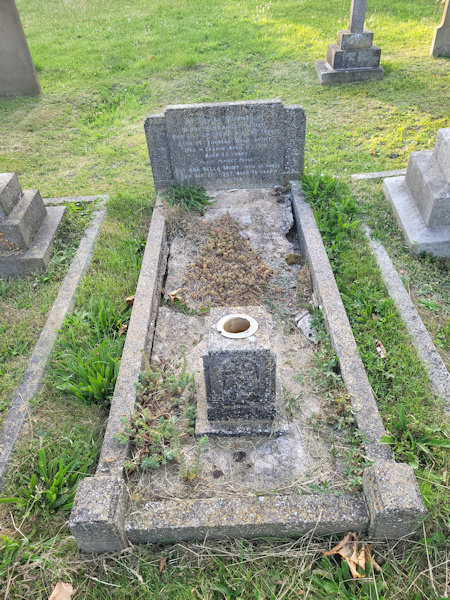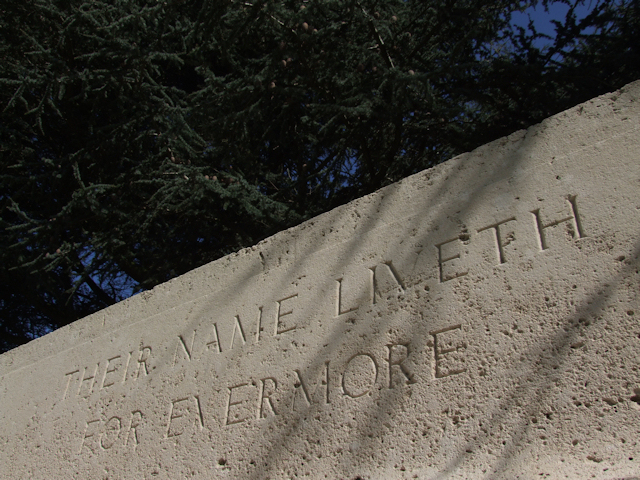Name
Thomas Rock Hulland Munt
25 Feb 1894
Conflict
First World War
Date of Death / Age
11/04/1919
25
Rank, Service Number & Service Details
Corporal
WR/283838
Royal Engineers
1st Foreway Company
Awards: Service Medals/Honour Awards
1914 /15 Star, British War and Victory medals
Cemetery/Memorial: Name/Reference/Country
ST. POL BRITISH CEMETERY, ST. POL-SUR-TERNOISE
III. E. 14.
France
Headstone Inscription
Not Researched
UK & Other Memorials
Hitchin Town Memorial,
4 Co' Hertfordshire Reg' Territorials’ Memorial, Hitchin,
St Mary's Church Roll of Honour (Book), Hitchin,
Hertfordshire Regimental Memorial, All Saints Church, Hertford
Pre War
Wartime Service
There are many documents and several service records that document Thomas’s experience. One service record is a record of an attestation ‘In The Field’ which is unusual. Below we have tried to accurately combine the records found and interpret them correctly. The abbreviation used for units of the Royal Engineers are sometimes difficult to read and interpret, especially when written in a ‘flamboyant’ style. So, despite best endeavours, the following may contain errors, which we will happily correct, if other information becomes available.
We know that he was in the Hertfordshire Regiment before the war and he must have volunteered for overseas service because his medal card shows that he went with them to France, landing there on 6 November 1914 – in fact his formal agreement to do so was signed on 30 August 1914.
In November 1914 he wrote to his mother saying that he had had a narrow escape when a bullet hit the butt end of his rifle and thereby saved his life.
His service documentation confirms that he later served as 144688 and then WR/283838 – both in the Royal Engineers (RE). His Hertfordshire Service Record shows that he was in France with them from 5 November 1914 to 30 July 1915, when he was formerly discharged from the Hertfordshires and attested into the RE ‘In The Field’ the following day joining No. 3 Special Bn. RE.
There are two main documents relating to his service as 144688. One is the standard Short Service Attestation and the other a ‘Descriptive Report on Enlistment’ which relates to his attestation in the ‘Field’. One may be the formal recording of the other.
Within his records are letters dated 13 and 25 September 1915 which explain the end of his service with the Hertfordshires and his attestation ‘In The Field’ to the Royal Engineers. They explain the Authority that covered men of the Territorial Force, which included the Herts Regiment, who re-attest for the Chemical and Tunnelling Companies of the Royal Engineers, Overseas. So it is confirmed that Thomas was discharged from the Hertfordshires to join the Royal Engineers (RE) to serve in one of the branches mentioned.
In his Short Service Attestation he was described as 21 years and 6 months, had worked as a Coppersmith, with the home address of 13 Cannons Cottage, Hitchin Hill, Hitchin. It acknowledged that he had previous military experience - 5 years, in the 1st Herts Regt T. F. but that service is not included in detail in his RE records.
The Descriptive Report on Enlistment recorded that he attested as a Sapper, joined them in the Field, attained a certain RE level of pay, and was promoted to Corporal, all on the 31 July 1915. In this record he was described as 22 years old, 5’ 6” tall, with a large mole on each cheek and one over his right eyebrow.
Within these records the dates of his service appear as ‘Home’ service from 31 July 1915 to 24 March 1917 and then France from 25 March 1917, but the period recorded as ‘Home’ service does not seem accurate given some of the information below, e.g. his sprained ankle on 14 September 1915 in France. Perhaps he was in the UK during much of 1916 as there is little detail noted during this time
Thomas was recorded on 18 August 1915 as going to GHQ (General Headquarters) to be on duty with the Royal Engineers (RE) as a chemist ‘In The Field’.
On the 14 September 1915 he sprained his ankle and went to No. 4 Stationary Hospital at St Omer and was discharged on the same day.
He formally extended his service on 15 February 1916 – he was probably time expired. He was given leave between 14 March and 28 March 1916.
He joined the 4 G B D (Gas Base Depot) from No. 3 Special Battalion on 5 January 1917. Then joined 352 E & M Coy (Electrical and Mechanical Company) from the RE Base Depot on 25 March 1917, which we believe was a Front Line unit.
On 8 May 1917 he joined the RE Base Depot from the Front and then on 22 May 1917 joined 354 E & M Coy from the RE Base Depot.
He was given leave between 6 and 16 July 1917. Then was transferred to RE Base Depot from RE 354 E & M Co on 16 August 1917.
On 2 September 1917 he was accused of disobedience as he was found in a Café during prohibited hours and not wearing a regulation waist belt. He was severely reprimanded on the 4th.
Then on the 25 November 1917 he released a man from the Guard Detention Room without authority and was again severely reprimanded and placed on ‘open arrest’.
On the 20 December 1917 he joined ‘OC 1 A Tram Co’ – although again not clearly written.
On the 25 February 1918 he was again accused, this time it was “When on active service neglect of duty viz: - the hut of which he was in charge being found in a very dirty condition.” Again he was severely reprimanded.
He seems to have received more leave from 14 March to 28 March 1918 – although the word ‘leave’ is not clear.
He received another 10-days leave (in France) from 1 July 1918 but was admitted to Hospital on the 15th and was subsequently discharged from 11 Stationary Hospital on 20 July when he again joined the RE Base Depot.
On 28 July 1918 he went to the 1 Foreway Company being “Temporally and Compulsory transferred to Transportation Branch RE with effect from 19-9-18 and allotted new Regt. No. number WR/283838.”
He received another 14 days leave from 25 January 1919.
At some date after this he became very ill and there are a series of telegrams sent from 12 Stationary Hospital:
- The 27 March 1919 included the phrases “Dangerously ill” with “Leukaemia Lymphatic”.
- 31 March “Very Much Worse”, and then
- 7 April 1919 “Dangerously ill” with “Leukaemia Lymphatic”.
He died a few days later on the 11th. When he died his unit was recorded as 231 L.R.F Co. Royal Engineers - probably Light Railway Foreway, but in a handwritten letter appears as L.R.T.C..
No 12 Stationary Hospital approved a report on his death:
“No. WR/283838 Cpl T. R. Munt, 231 L.R.F. Co. R. E. was admitted to No 12 Stationary Hospital on the 20th March, 1919 suffering from Influenza. He died in Hospital on 11th April, 1919.
The cause of his death was SPLENIC LEUKAEMIA developing after INFLUENZA and was caused by Military Service in the War Zone Area.”
Somebody wrote for more information about his death and effects, and a reply was sent in a letter dated 10 May 1919. It confirmed that he died of influenza at No. 12 Stationary Hospital in St Pol, France 4/4/19(sic). Apparently he had written home about a fortnight before, and before going to hospital, that his hut had caught fire and all his property was destroyed, other than those about his person.
On 15 August it was confirmed that his personal property should be sent to his mother at 13 Cannons Cottage, Hitchin. This included his disks (dog tags), letters, watch & strap, knife, pipe, badge, notebook, mirror, metal ring
He was buried in Plot 3, Row E, Grave 14 in the St. Pol British Cemetery in France.
Additional Information
His mother, Mrs A B Munt, of 13, Cannons Cottage, Hitchin, Herts., ordered his headstone inscription, which reads: “GREATER LOVE HATH NO MAN THAN THIS”.
After his death £44 19s 11 pay owing was authorised to go to his mother on 18 August 1919, which included a war gratuity of £28 10s 0d.
His pension cards record Ada Bella Munt, his mother, as his dependant, living at 13 Cannons Cottages, Hitchin Hill, Hitchin, but does not give details of any pension.
She applied for his 1914 Star on 30 November 1919, while living at the above address and confirmed receipt on 15 January 1920.
His War and Victory medals were received by his mother on 10 May 1922
Of his brothers Henry also died of illness after the war ended, but ‘contracted in service’ and Robert Munt served in the Cambridgeshire Regiment and survived.
There is an entry for Thomas in the National Roll of the Great War – these were normally placed by family member using what they knew, and are not always correct, and that seems to be true in this case when comparing the content with his service record, e.g. it includes the suggestion that he died in the UK when he is buried in France near the hospital in St Pol.
Thomas is also commemorated on his parents’ grave in Hitchin Cemetery, and its inscription reads:
IN LOVING MEMORY OF
ALEXANDER MUNT
DIED JULY 29TH 1938, AGED 80 YEARS.
ALSO OF THOMAS ROCK MUNT
DIED IN FRANCE APRIL 11TH 1919.
AGED 25 YEARS.
“PEACE, PERFECT PEACE”.
ALSO ADA BELLA MUNT, WIFE OF ABOVE
DIED SEP. 21ST 1947, AGED 76 YEARS
“RE-UNITED”
Acknowledgments
Adrian Dunne, David C Baines, Jonty Wild



